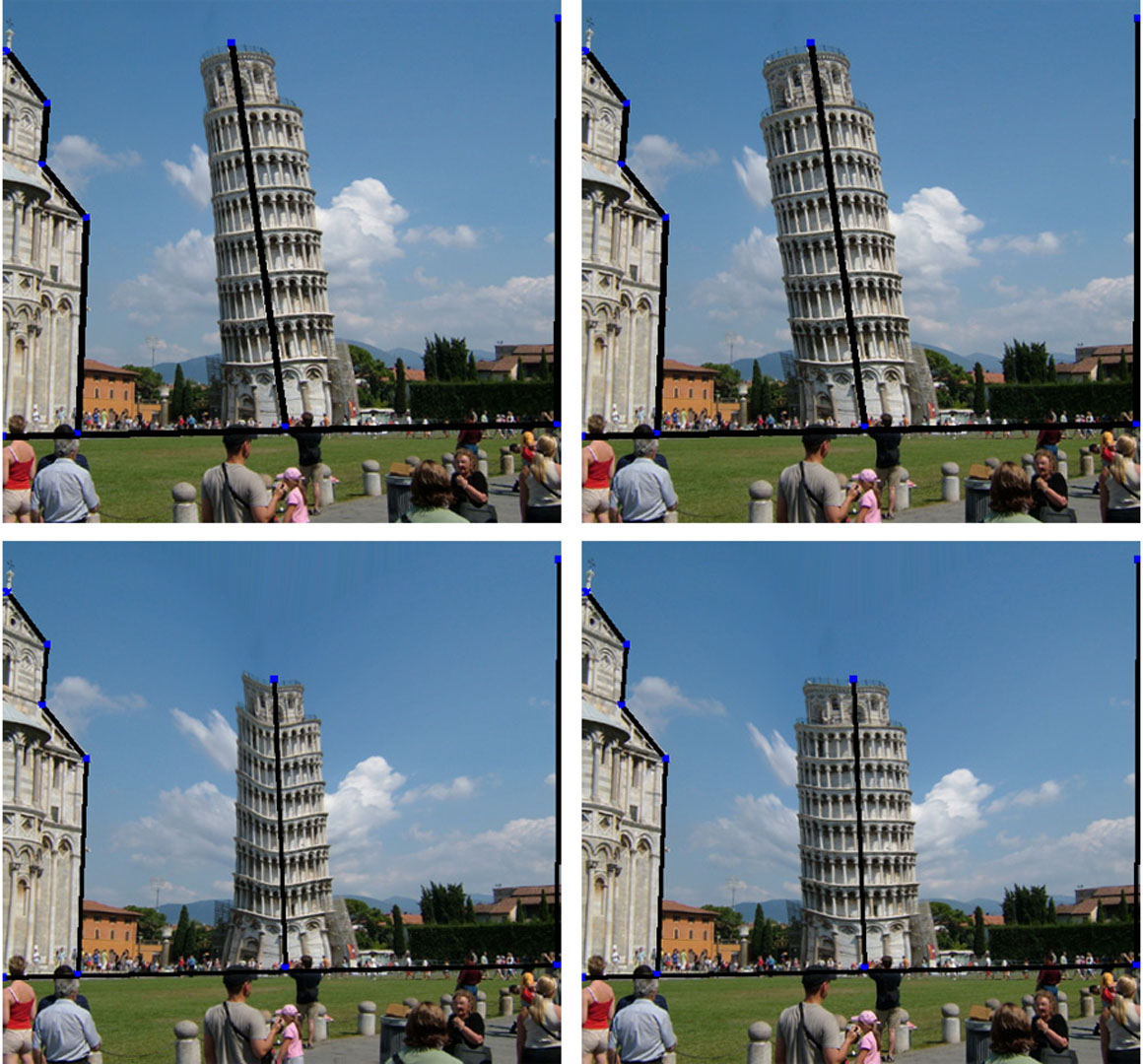“Image deformation using moving least squares” by Schaefer, McPhail and Warren
Conference:
Type(s):
Title:
- Image deformation using moving least squares
Presenter(s)/Author(s):
Abstract:
We provide an image deformation method based on Moving Least Squares using various classes of linear functions including affine, similarity and rigid transformations. These deformations are realistic and give the user the impression of manipulating real-world objects. We also allow the user to specify the deformations using either sets of points or line segments, the later useful for controlling curves and profiles present in the image. For each of these techniques, we provide simple closed-form solutions that yield fast deformations, which can be performed in real-time.
References:
1. Alexa, M., Cohen-Or, D., and Levin, D. 2000. Asrigid-as-possible shape interpolation. In Proceedings of ACM SIGGRAPH 2000, ACM Press/Addison-Wesley Publishing Co., New York, NY, USA, 157–164. Google ScholarDigital Library
2. Beier, T., and Neely, S. 1992. Feature-based image metamorphosis. In SIGGRAPH ’92: Proceedings of the 19th annual conference on Computer graphics and interactive techniques, ACM Press, New York, NY, USA, 35–42. Google ScholarDigital Library
3. Bookstein, F. L. 1989. Principal warps: Thin-plate splines and the decomposition of deformations. IEEE Trans. Pattern Anal. Mach. Intell. 11, 6, 567–585. Google ScholarDigital Library
4. Gu, X., and Yau, S.-T. 2003. Global conformal surface parameterization. In SGP ’03: Proceedings of the 2003 Eurographics/ACM SIGGRAPH symposium on Geometry processing, Eurographics Association, Aire-la-Ville, Switzerland, Switzerland, 127–137. Google ScholarDigital Library
5. Horn, B. 1987. Closed-form solution of absolute orientation using unit quaternions. Journal of the Optical Society of America A 4, 4 (April), 629–642.Google ScholarCross Ref
6. Igarashi, T., Moscovich, T., and Hughes, J. F. 2005. Asrigid-as-possible shape manipulation. ACM Trans. Graph. 24, 3, 1134–1141. Google ScholarDigital Library
7. Ju, T., Warren, J., Eichele, G., Thaller, C., Chiu, W., and Carson, J. 2003. A geometric database for gene expression data. In SGP ’03: Proceedings of the 2003 Eurographics/ACM SIGGRAPH symposium on Geometry processing, 166–176. Google ScholarDigital Library
8. Kobayashi, K. G., and Ootsubo, K. 2003. t-ffd: free-form deformation by using triangular mesh. In SM ’03: Proceedings of the eighth ACM symposium on Solid modeling and applications, ACM Press, 226–234. Google ScholarDigital Library
9. Lee, S.-Y., Chwa, K.-Y., and Shin, S. Y. 1995. Image metamorphosis using snakes and free-form deformations. In SIGGRAPH ’95: Proceedings of the 22nd annual conference on Computer graphics and interactive techniques, ACM Press, New York, NY, USA, 439–448. Google ScholarDigital Library
10. Levin, D. 1998. The approximation power of moving least-squares. Mathematics of Computation 67, 224, 1517–1531. Google ScholarDigital Library
11. Maccracken, R., and Joy, K. I. 1996. Free-form deformations with lattices of arbitrary topology. In Proceedings of ACM SIGGRAPH 1996, ACM Press, 181–188. Google ScholarDigital Library
12. Sederberg, T. W., and Parry, S. R. 1986. Free-form deformation of solid geometric models. In Proceedings of ACM SIGGRAPH 1986, ACM Press, 151–160. Google ScholarDigital Library
13. Shepard, D. 1968. A two-dimensional interpolation function for irregularly-spaced data. In Proceedings of the 1968 23rd ACM national conference, ACM Press, 517–524. Google ScholarDigital Library
14. Smythe, D. 1990. A two-pass mesh warping algorithm for object transformation and image interpolation. Tech. Rep. 1030, ILM Computer Graphics Department, Lucasfilm, San Rafael, Calif.Google Scholar
15. Tiddeman, B., Duffy, N., and Rabey, G. 2001. A general method for overlap control in image warping. Computers and Graphics 25, 1, 59–66.Google ScholarCross Ref
16. Wolberg, G. 1998. Image morphing: a survey. The Visual Computer 14, 8/9, 360–372.Google Scholar




